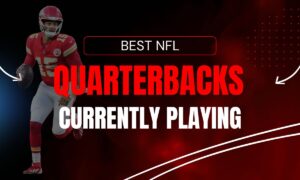Who could have imagined saying this a few years ago?
The wide receiver is the most valuable non-quarterback position in the National Football League. Traditionalists will argue offensive lines and pass-rushers, or perhaps even a shutdown corner can make or break any team, but these claims do not hold up in the modern NFL.
Want proof? Well, the Cincinnati Bengals went 4-11-1 in 2020, drafted a Pro Bowl wideout (Ja’Marr Chase) with the fifth pick— much to the disappointment of those same traditionalists that felt Oregon tackle Sewell was the better option— and reached the Super Bowl the next year.
Sewell went to the Detroit Lions two picks later and helped them go 3-13-1 after they went… 5-11 the year prior.
The league is changing
The NFL has been sped up in every sense of the word: actual speed, in terms of athleticism, the speed at which players have to prove themselves, and the speed at which young players can make impacts.
Justin Jefferson helped kick-start the revolution of young wideouts by redefining the Minnesota Vikings offense and becoming a top-10 receiver all in his rookie year, one year before Chase broke all of the records that he set.
The league has also become skewed to help quarterbacks and entice offensive coordinators to dial up more passes than runs, which means that receivers are actively involved more than they ever have been. This is why players like Tyreek Hill feel comfortable demanding $30m guaranteed per year, when just a decade ago, all-time great Calvin Johnson was signed onto an eight-year, $132m deal, making just over half the amount that Hill currently is.
Receivers are also asked to do more than they were before; the best example of this is Deebo Samuel, who was forced into becoming a part-time running back last season. The strain put on him was so great that he recently demanded a trade from a historically great franchise with a genius coach and winning culture, a scenario which will likely not be seen for another 20 years.
The value of a wide receiver
Tom Brady, Aaron Rodgers, and Russell Wilson are still holding it down for the old guard, but the league is trending towards younger QBs— that is because, first and foremost, their rookie contracts don’t cause much of a cap hit and teams can surround them with more talent, but also because players entering the league are more ready from the onset than they were before.
Because of this, franchises need to surround them with weapons.
Look at what the Los Angeles Rams did last year: they traded for a QB and then signed DeSean Jackson to complement their elite receiving corps, and once that did not work out, they went out and brought Odell Beckham Jr. aboard.
LA’s methodology was not unique, either. The Tampa Bay Buccaneers, who won the Super Bowl the year before, were spoiled for choice at pass-catching positions, with Mike Evans, Chris Godwin, Antonio Brown, Rob Gronkowski, O.J. Howard, and Cameron Brate all ready to come in and make plays.
Backing it up just one step further, the Bucs largely found themselves in a position to sign Brady because he was frustrated with his lack of receiving talent in New England. Great players need guys that can make plays around them, and there is too much wide receiver talent in the league to ignore right now.
Back to Samuel: the South Carolina product is also well-loved because he is a tremendous blocker on the edge. His physicality is unlike the relatively docile diva receivers of the past, who talked louder than they played off the ball.
It is about time that the people making the plays get the credit. Yes, the blockers are important, pass-rushers can change the game, a smart middle linebacker can anchor a defense, and a shutdown corner can ruin a game plan, but the wide receiver position has been undervalued for too long, and now is the day of reckoning.









